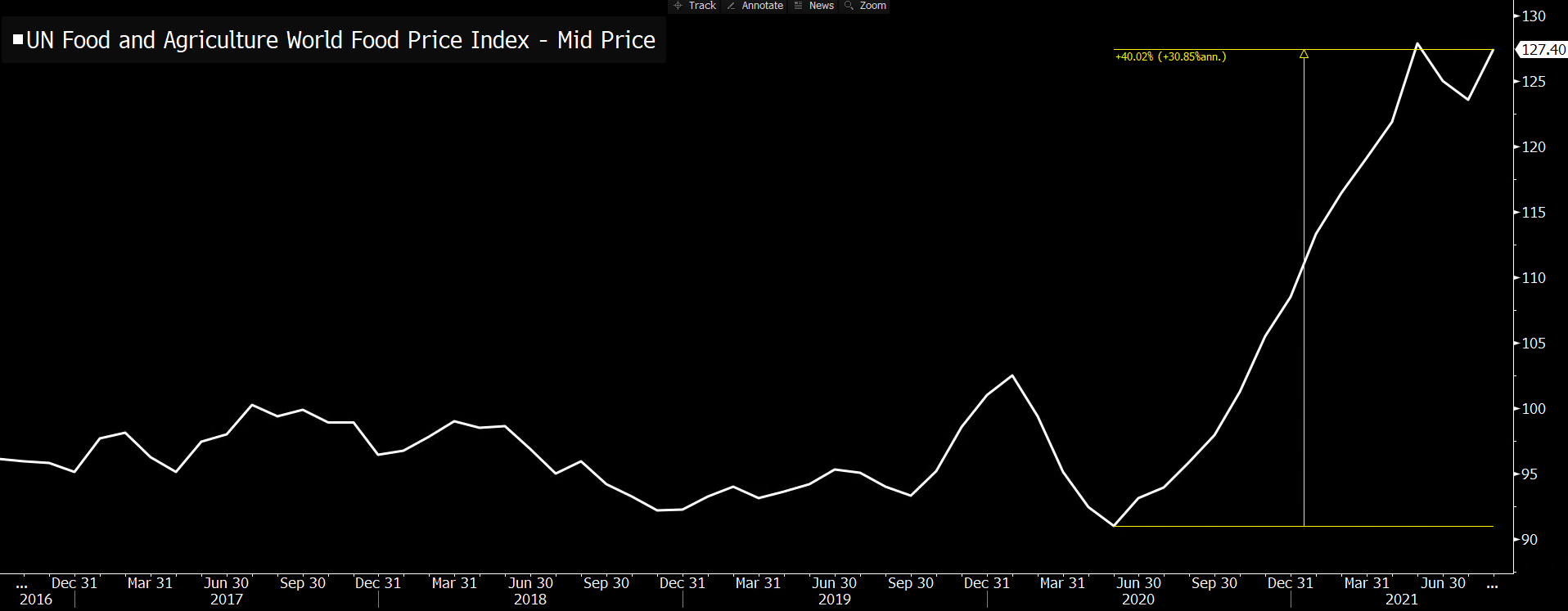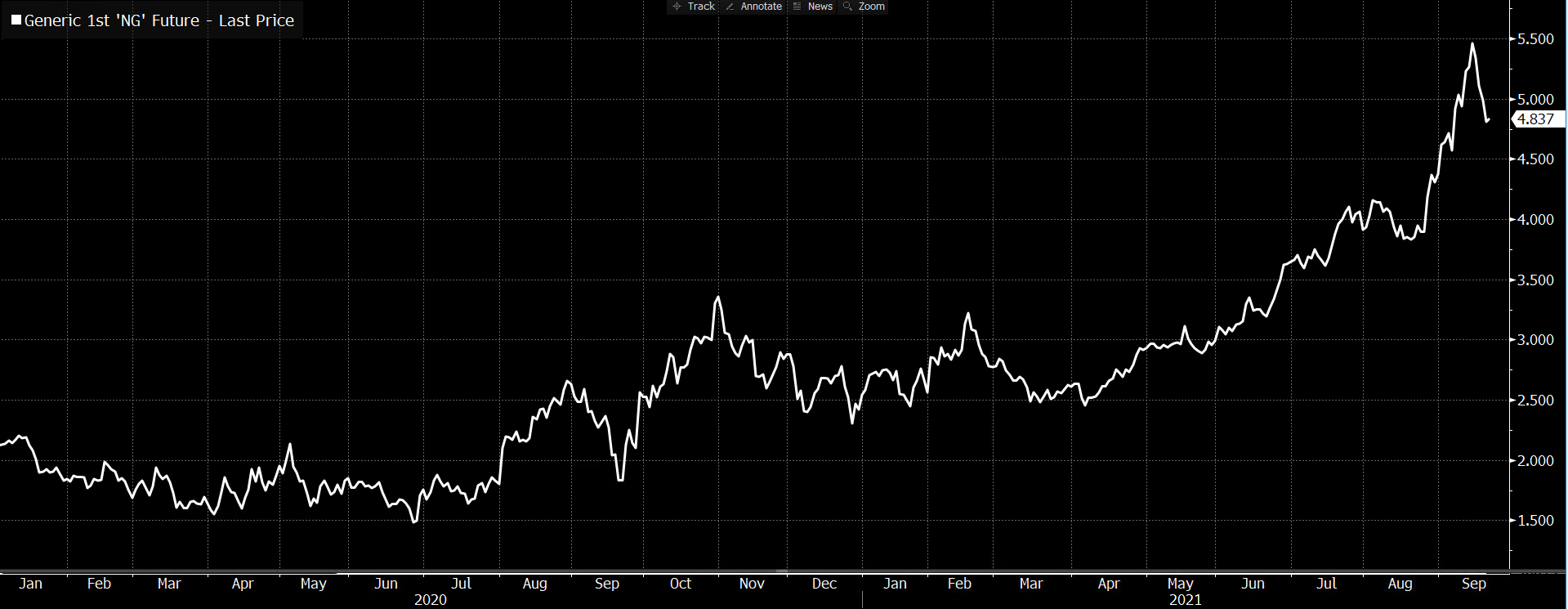We all need to eat: 3 ETFs to play this indispensable theme
We are now in Spring – and appropriately enough for a traditional time of growth and harvest, let’s discuss food.
Throughout history, the development of our society has been based around our “physiological needs”, which Abraham Maslow described as being; warmth, shelter, rest and food.
In modern, developed economies, we often take food security and consumption for granted.
From the home desk where I’m writing this note, I can look out the window and see four different food vendors/supermarkets where I could satisfy my hunger within around two minutes – and my view is blocked almost entirely by another apartment building.
Indeed, as time has marched on, we have consumed more per capita than ever before.
A 2015 report by the World Health Organisation (WHO) found that we have increased our per capita calorie intake from 2,947 kcal per day in 1965, up to 3,440 kcal per day in 2015. For developing countries, that growth is even larger, going from 2,054 kcal per day to 2,850 kcal per day.
As we live longer and grow wealthier, we naturally want to consume more as part of life’s luxuries.
So, what happens when our food security is threatened by supply chain disruptions, COVID-19 and more?
There is a lot of fertile ground for discussion in this topic, so today we will try to cover as much as possible in exploring the implications of food shortages on the global investing landscape.
Taking stock
Reports of food shortages emerging across the globe. While being reported at a country level, many share a similar root cause: COVID-linked supply disruptions.
It’s hard to imagine this outside of the context of toilet paper and pasta disappearing from shelves here in Australia, but anecdotal reports from the United States and the United Kingdom both report supermarkets and restaurants struggling to find supply.
The World Bank noted in August that numerous countries, both developed and developing, are experiencing high food price inflation at the retail level and that during 2020, there was an increase of 320 million people globally who lacked access to adequate food – that figure is now 2.37 billion people or around 30% of the global population.
In the US particularly, the latest figures from the Bureau of Labour Statistics show that five of the six major grocery store food group indexes saw increased inflation over the last quarter this includes the cost of meats rising 5.9% and the cost of dairy increasing by 6.2%.
In fact globally if you look at the UN Food and Agriculture World Food Price Index, the index is at levels we have not seen since early 2014, and is posting a 30% rise in prices since the pandemic first made its impact on global supply chains last year.

Source: Bloomberg
To break that down even further, here are just a few of the commodity price movements for 2021:
- Live Cattle +8.41%
- Coffee +42.96%
- Corn +6.82%
- Sugar +22.47%
A meagre meal
It’s clear that food prices are increasing and may continue to increase, due to a lack of supply.
The various causes of these supply constraints could each justify their own research paper, so for sake of word count, we’ll be as concise as possible.
Supply chain disruptions are extending from the producers all the way to the final journey of product-to-shelves.
Starting at the production side, food producers have encountered issues associated with labour shortages – see the lack of fruit pickers in Queensland with the restricted travel of young backpackers – and weather-related supply shocks impacting their ability to meet global demand.
While not a topic we can fully explore in this note, climate change and the aberrant weather effects it causes threaten global food security and will likely be a primary driver of agricultural commodity prices for the foreseeable future.
Producers are also encountering issues with rising fertiliser prices; rising natural gas costs globally are impacting the manufacturing of ammonia-nitrate fertiliser, one of the two main synthetic fertilisers used in commercial farming.

Source: Bloomberg, natural gas futures contracts since 1 Jan 2020
This price squeeze has meant countries with stockpiles have limited fertiliser exports in lieu of preserving domestic industry, and farmers are stuck bearing the weight of rising input prices to production.
Moving on to logistics, global supply chains have encountered bottlenecks relating to further labour shortages and freight delivery.
Freighter ships, which would normally carry goods around the world to comply with a “just in time” model, are now stuck at ports due to restrictions on travel, having operations disrupted by Delta outbreaks or are waiting at ports because cargo cannot be loaded fast enough.
In turn, the cargo then cannot be unloaded and delivered effectively due to labour shortages impacting the availability of delivery drivers – the UK has actually recently announced a program to approve 30,000 new work visas for those qualified to drive heavy goods vehicles to remedy that particular issue.
Together, these issues add up to the end retailer not being able to source sufficient supplies in a timely manner, or being forced to pass along prices as input costs throughout the entire supply chain rise.
Impact on Markets
Between a low-interest-rate environment, market volatility rippling throughout Asia and rolling waves of the Delta strain, the market has plenty on its mind to distract from this issue – for now.
But if shortages continue to worsen, or even if they remain level but carry on through to next year, this may have major consequences on market sentiment.
Two main issues:
1) Rising prices of food will inevitably be passed along to the consumer, impacting what is a core living expense for the majority of people around the world.
This is inflation by definition, albeit will not be reflected in CPI measures, and only partially in measures such as US core PCE (Federal Reserve inflation benchmark), which excludes food prices. Since inflationary concerns still remain a contentious issue in the market, the optics of potentially double-digit food inflation over a year being passed to consumers could be a large sentiment catalyst for capital markets.
2) What do you do when you get hungry? Personally, I progressively get sadder over time until my partner tells me to snap out of it and order takeaway. That is to say, I get irrational.
The threat of food shortages, be it realised or not, adds an element of uncertainty to what is already a market threatened with rising volatility – this may lead to irrational behaviour and spark a tail-risk event in markets, if the shortage is perceived to indicate broader conditions about the global economy and supply chain issues.
Planting the seeds
As an investment thesis, getting exposure to agricultural commodities whilst the world scrambles to buy them all up “while stocks last” is appealing from a supply/demand outlook, if potentially not a strictly moral one.
The largest and most illiquid investment vehicles are ETFs that track listed players within the sector, including growers, producers and equipment manufacturers. These have the added benefit of including fertiliser producers, so you get exposure to another supply-restricted industry.
Examples of these ETFs include:
VanEck Agribusiness ETF (MOO: NYSE)
With $1.1 billion USD under management, MOO is one of the largest agribusiness ETFs available to the market. The ETF focuses on an exposure of ~50 global companies across; chemicals and fertilisers, animal health, seeds, irrigation equipment, machinery, aquaculture and fishing, livestock and cultivation.
BetaShares Global Agriculture Companies ETF (Hedged) (FOOD: ASX)
For an AUD-denominated exposure, BetaShares have their FOOD (Hedged) ETF, with a slightly broader portfolio (~70 global companies) across similar sectors as MOO – albeit with a higher weighting to packaged foods and meats.
There are also more direct commodity ETFs and ETNs (Exchange Traded Notes), which carry a higher risk to the investor as they are more targeted and thereby require more specialist knowledge of a particular area.
One of the largest of these vehicles is the Invesco DB Agriculture Fund (DBA: NYSE), which tracks changes in the DBIQ Diversified Agriculture Index, essentially providing a broad exposure to commodity futures across some of the most liquid futures contracts (sugar, coffee, corn, wheat, live cattle, cocoa primarily).
Bon appetit
Food as a theme is an exposure many investors do not consider, such is how routine and ordinary it is to our lives that we sometimes forget the scale of the industry.
Supply disruptions and fears of shortages today may provide a compelling catalyst for what is a broader investment into a growing population, whose wealth and long life will compel us to require more food that is grown more intelligently.
By taking a broad approach across multiple agricultural sectors, we can benefit from our own collective good health (relatively, of course, COVID notwithstanding) and benefit from humanity’s ever-growing demand for nourishment.
Never miss an insight
Enjoy this wire? Hit the ‘like’ button to let us know. Stay up to date with my content by hitting the ‘follow’ button below and you’ll be notified every time I post a wire. Not already a Livewire member? Sign up today to get free access to investment ideas and strategies from Australia’s leading investors.
2 topics

